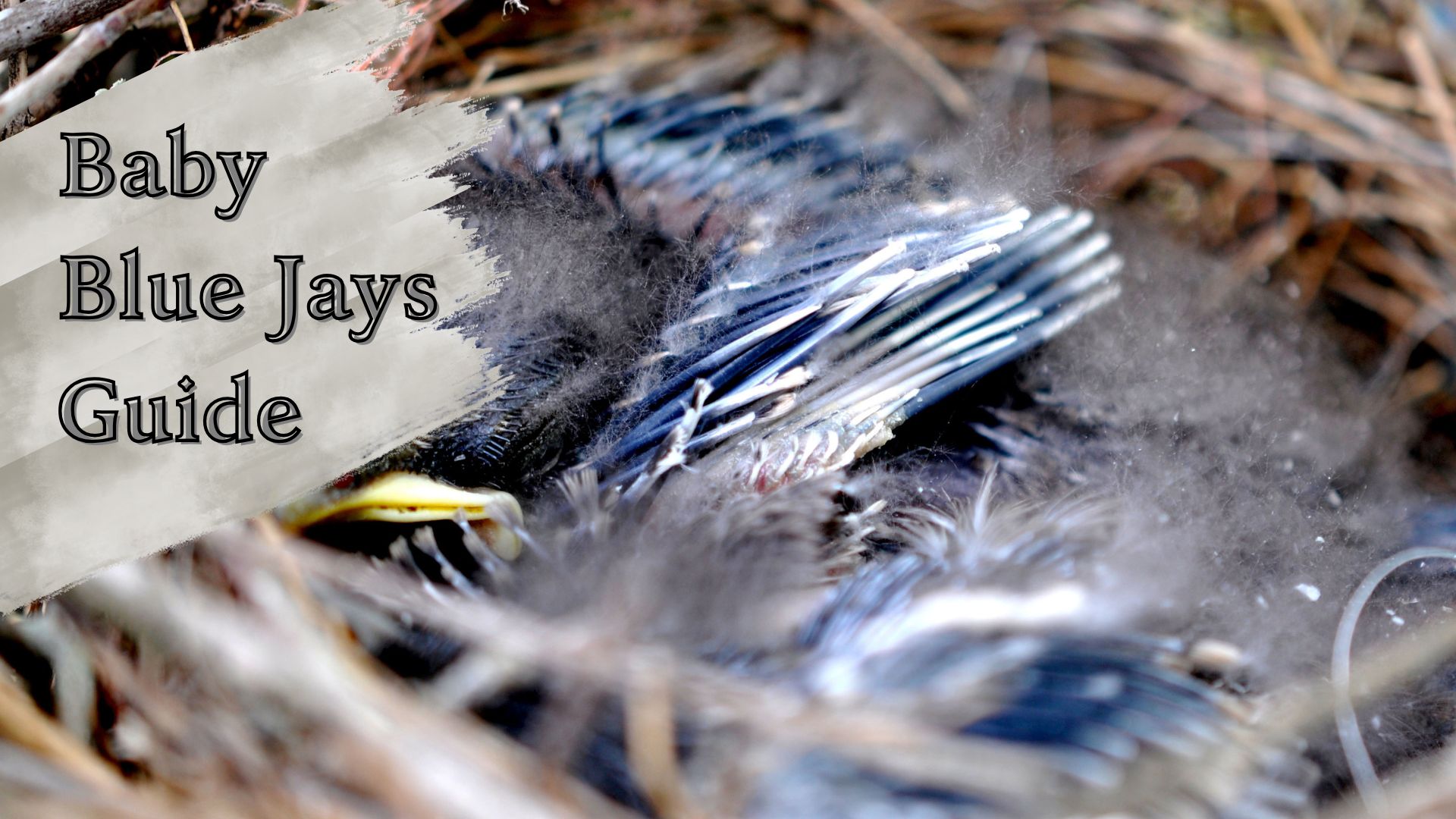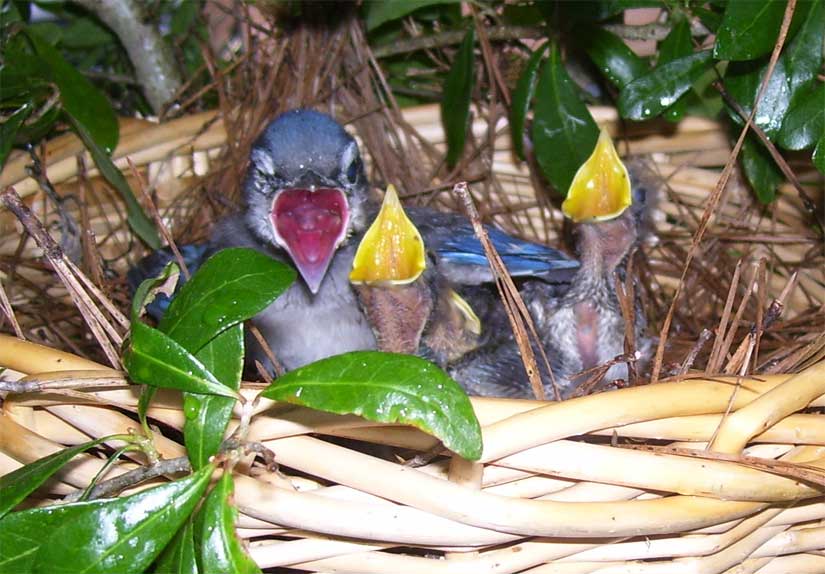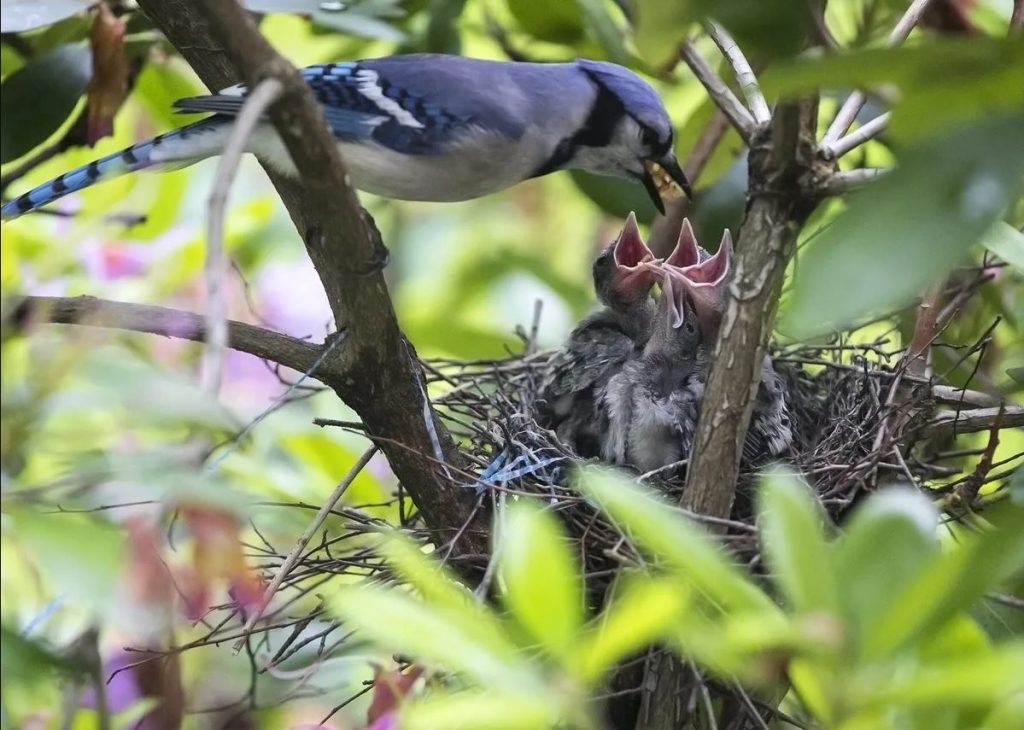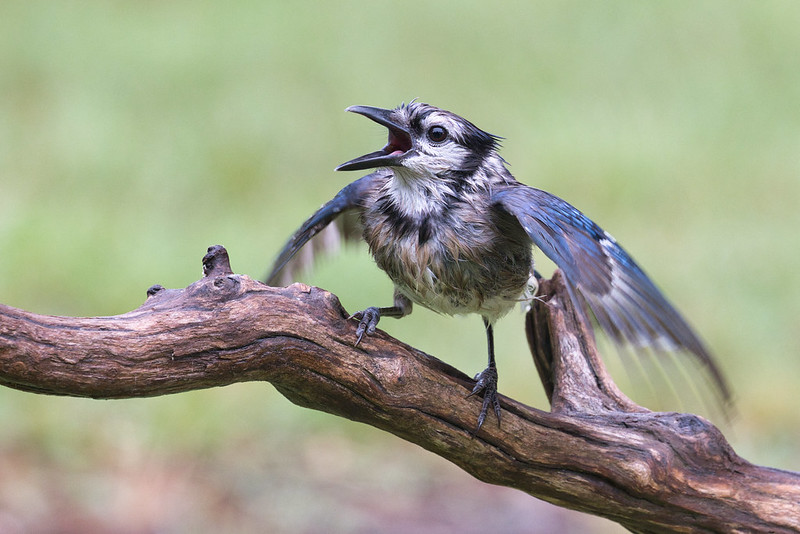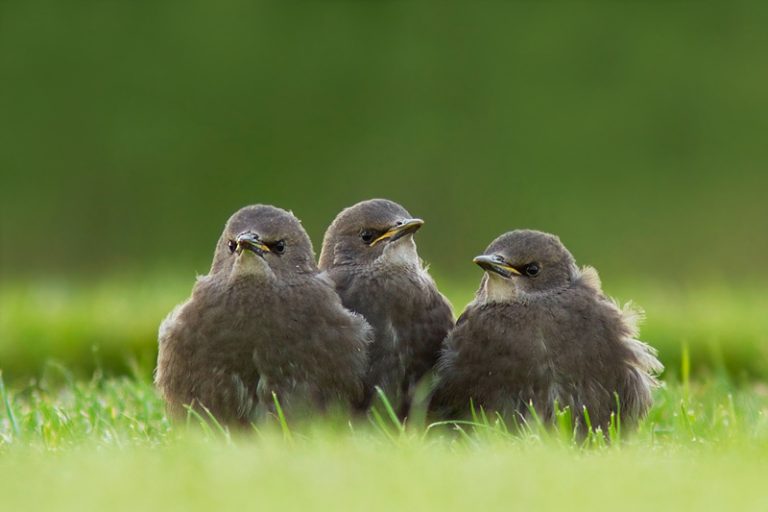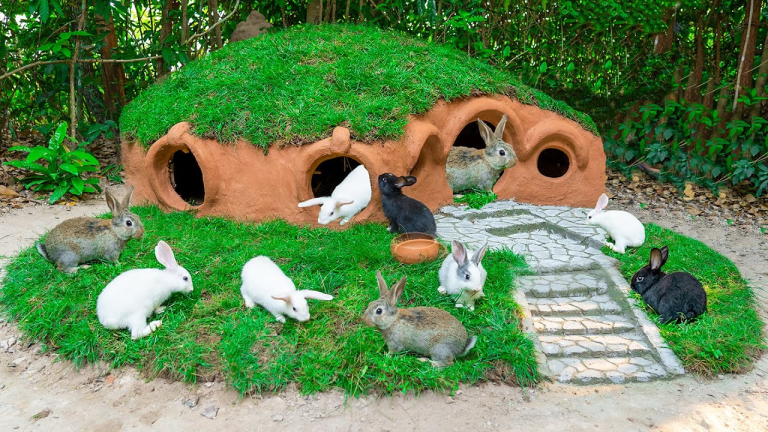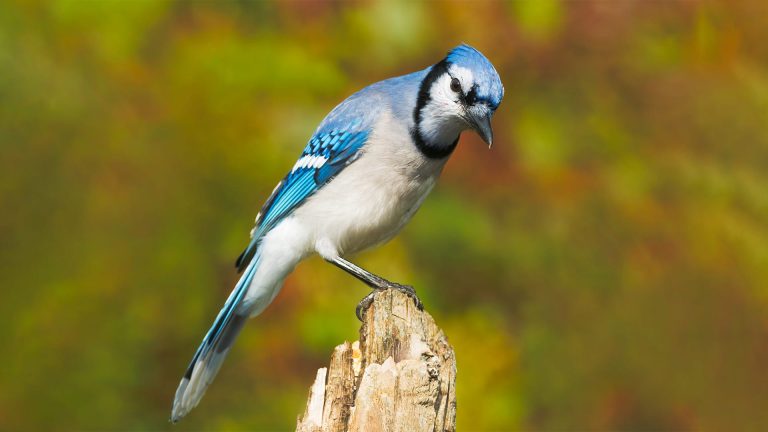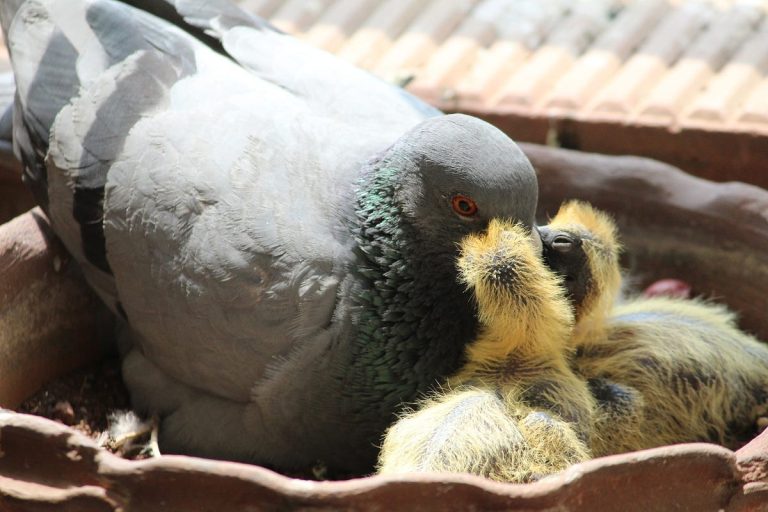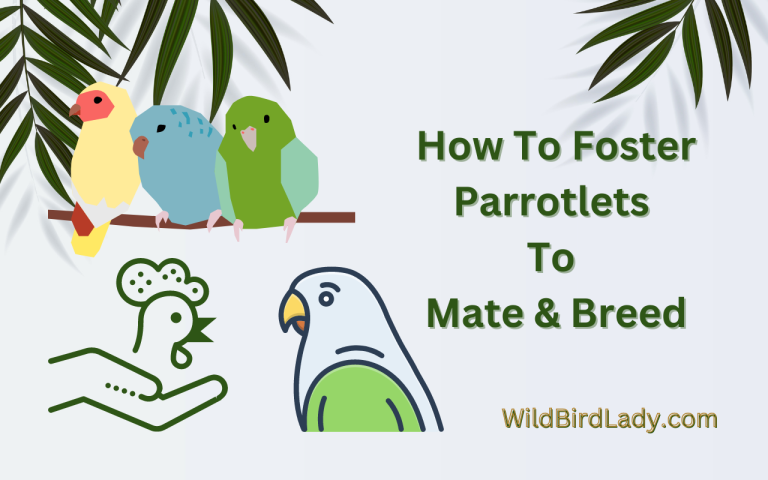Baby Blue Jays: Life Stages, Care Tips, and What to Do If You Find One Alone
As a birdwatching enthusiast for over 13 years, I’ve had the privilege of observing blue jays in every stage of life. From the moment they hatch until they take their first flight, baby blue jays are a marvel of nature. In this guide, I’ll walk you through their fascinating development, what they eat, how you can support them, and what to do if you stumble upon one alone in your yard.
Let’s dive into the world of baby blue jays — feathered wonders with big personalities and even bigger voices.
Life Stages of Baby Blue Jays
Understanding the life cycle of baby blue jays helps us know what’s normal and what’s cause for concern. Like all birds, blue jays go through several distinct stages:
1. Egg Stage (Day 0 – Day 17)
The blue jay breeding season typically runs from March through July. The female lays 3 to 7 eggs and incubates them for about 17-18 days while the male brings her food. During this period, she rarely leaves the nest.
2. Hatchling (Day 1 – Day 7)
When the chicks hatch, they’re completely helpless — blind, featherless, and dependent on their parents. According to All About Birds, both parents take part in feeding the young, bringing them insects and regurgitated food every few minutes.
3. Nestling (Day 8 – Day 17)
By the second week, baby jays start to grow pin feathers and open their eyes. Their insistent begging calls become louder, and they begin to resemble miniature blue jays.
4. Fledgling (Day 18 – Day 24)
At around 17-21 days old, fledglings leave the nest. This is where many people encounter them — hopping on the ground, seemingly alone. But don’t worry! Parents are usually nearby, continuing to feed and protect their young.
5. Juvenile (1 – 3 Months)
Juveniles gain independence over the next few weeks. Their plumage becomes more vibrant, and their flight improves. You might notice they stay in family groups throughout the summer.
What Do Baby Blue Jays Eat?
Blue jays are omnivores, and their diet evolves as they grow:
- Hatchlings and Nestlings: Primarily insects, caterpillars, and soft regurgitated food from parents.
- Fledglings: Small insects, soft fruits, crushed seeds.
- Juveniles: Adult blue jay diet — a mix of acorns, seeds, berries, nuts, and insects.
If you’re feeding blue jays in your yard, consider mealworms, chopped nuts, or suet crumbles. Avoid bread, salty snacks, or milk — these can be harmful.
How to Identify a Baby Blue Jay
Identifying a baby blue jay, especially if you’re new to birdwatching, can be tricky. They share many traits with adults, but subtle differences give them away. Here’s how to tell them apart:
- Fledglings typically have shorter, less developed tails and wings. Their feathers may appear puffier or messier, lacking the smooth sleekness of an adult’s plumage.
- Their coloring is also more muted. While adults have vivid blue, black, and white patterns, fledglings often look more grayish-blue or washed out.
- They may exhibit a behavior known as gaping — opening their beaks wide and begging for food, especially when approached.
- Their movements are awkward. You might see them hopping or fluttering with little control. Their flight is unsteady, often limited to short bursts or gliding to the ground.
- They tend to be quieter than adults but will make soft begging calls when parents are near.
It’s important to note that fledglings on the ground are usually not abandoned. They are in a transitional phase, learning to fly under parental supervision. In most cases, the best action is no action — observe from a distance and allow nature to take its course.
What to Do If You Find a Baby Blue Jay Alone
This is a common dilemma for many backyard birders. Here’s a step-by-step guide to help you assess and act responsibly:
1. Assess the Situation
Before doing anything, take a deep breath and observe carefully. Not all baby birds found alone need rescuing.
- Check for signs of injury: Is the bird bleeding? Is one wing drooping lower than the other? Does it appear lethargic or have trouble keeping its eyes open?
- Look around: Are there adult blue jays nearby, possibly calling or flying back and forth? Blue jay parents are known for staying hidden while keeping a close eye on their young.
- Wait and watch: If the bird seems alert and active, observe from a safe distance (at least 20 feet) for 30 to 60 minutes. If you see adults returning periodically, it’s best to leave the chick alone — it’s being cared for.
2. If It’s a Fledgling
A fledgling is a young bird that has left the nest but is still under parental care. These birds have feathers, can hop and flutter, and may appear clumsy or grounded.
- Do not remove it unless it’s in danger. Fledglings often spend several days on the ground while they strengthen their flight muscles.
- If the area is dangerous (e.g., near traffic, predators, or footpaths), gently move the fledgling to a low branch or nearby shrub — no more than a few feet from where you found it.
- Avoid handling it too much. Your scent will not cause the parents to abandon it, but too much disturbance might attract predators.
3. If It’s a Nestling (No Feathers or Can’t Stand)
Nestlings are not yet ready to leave the nest. They have very few feathers, closed or partially open eyes, and can’t stand or hop.
- Try to locate the original nest. If it’s intact and reachable, gently place the baby back in it.
- If the nest is destroyed or unreachable, create a substitute: use a small basket or container lined with soft, dry grass or tissue. Poke drainage holes in the bottom and securely fasten it to a nearby tree at a similar height to the original nest.
- Then, step back and watch. Parents will often return once you’re gone. Give them at least an hour before intervening further.
- Never feed a nestling unless instructed by a licensed wildlife rehabilitator — improper food can do more harm than good.
4. Contact a Wildlife Rehabilitator
If the bird is injured or the parents are confirmed gone, reach out to a local licensed wildlife rehab center. Don’t attempt to raise it yourself — in most states, it’s illegal without a permit.
How You Can Help Baby Blue Jays Thrive
Supporting baby blue jays isn’t just about reacting when you find one — it’s also about creating a safe, nurturing environment that helps families thrive all season long. Here’s how you can make your yard a sanctuary:
Provide Safe Shelter
Blue jays build their nests in the crooks of trees, often choosing dense foliage for better concealment. You can help by planting native trees and shrubs that offer good cover — such as oak, maple, cedar, holly, and pine. These not only provide nesting sites but also attract the insects and natural foods they need.
Leave some natural debris like twigs, grasses, and pine needles in your yard — these are the building blocks for blue jay nests. If you already have large trees on your property, avoid heavy trimming during the nesting season (March to July) to prevent disturbing active nests.
Offer Fresh Water
Baby blue jays, like adults, need water for both hydration and bathing. Set up a shallow birdbath with gently sloping sides. Change the water daily to prevent the spread of disease and add a few small stones or sticks so fledglings can perch safely while drinking.
In hot climates or dry seasons, adding multiple water sources around your yard can attract more bird activity and give parent jays a better chance to keep their young hydrated.
Avoid Pesticides
Chemical pesticides kill off essential food sources — caterpillars, beetles, and other soft-bodied insects that baby jays rely on. Instead, opt for organic gardening methods. Encourage natural pest control by attracting ladybugs, praying mantises, and other beneficial insects.
Blue jays also forage on the ground and in low shrubs, so minimizing chemical exposure in these areas is crucial to protecting their food chain.
Supplement with Food
During nesting season, you can give parent blue jays an extra boost by offering nutritious foods. Try placing mealworms, chopped unsalted peanuts, or black oil sunflower seeds in platform feeders or on open trays.
Avoid foods like bread, crackers, or anything salty — these are harmful to both adults and young. A high-protein diet is key for chick development, so natural, unprocessed foods work best.
Keep Pets Indoors
Free-roaming cats are one of the biggest threats to fledglings. A baby blue jay learning to fly is vulnerable and won’t be able to escape quickly. If you have a cat, keep it indoors during spring and summer mornings, when fledglings are most active.
Even dogs can pose a danger if they chase birds on the ground. Supervise your pets outside, and consider placing protective cages or fencing around areas where fledglings are frequently seen. Cats are a major threat to fledglings. During nesting season, keep them indoors or supervised.
My Personal Story with Baby Blue Jays
I’ll never forget the spring I found a baby blue jay chirping under my oak tree. It looked helpless, but as I watched from my porch, I saw the parents swoop in with food every few minutes. Within days, the fledgling was fluttering from branch to branch. That moment taught me that nature often knows best — and our role is to support, not interfere.
Frequently Asked Questions (FAQ)
1. Can I feed a baby blue jay if I find one?
No. Baby birds require a very specific diet that changes with age. Feeding them the wrong foods — like bread or milk — can be harmful or fatal. Always consult a licensed wildlife rehabilitator before offering food.
2. Will touching a baby blue jay cause the parents to abandon it?
No, that’s a myth. Most birds have a poor sense of smell and will not abandon a chick just because a human touched it. Still, handle the bird as little as possible to avoid unnecessary stress or drawing attention from predators.
3. How long do baby blue jays stay with their parents?
Baby blue jays remain with their parents for several weeks after leaving the nest. Fledglings are fed and protected by adults for about 2–3 weeks before becoming independent.
4. Do blue jays reuse their nests?
Typically, no. Blue jays usually build a new nest each season. However, they may use the same tree or territory year after year.
5. What sounds do baby blue jays make?
Young blue jays make high-pitched begging calls that differ from the loud “jay-jay” calls of adults. These softer calls help parents locate and feed them without attracting too much attention.
6. Are baby blue jays aggressive?
Not at all. They may gape or squawk when approached, but that’s normal begging behavior. Adult blue jays, on the other hand, are known for their bold and sometimes territorial behavior.
7. What should I do if I see a baby blue jay near a cat or dog?
If the fledgling is in immediate danger, gently move it to a nearby shrub or low branch — just a few feet away from the original spot. Then monitor from a distance to ensure the parents return.
Final Thoughts
Baby blue jays are fascinating, resilient, and a joy to observe. As bird lovers, the best thing we can do is provide safe spaces, understand their behavior, and intervene only when necessary. By learning their life stages and dietary needs — and being ready to help responsibly — we give them the best chance at thriving.
Let’s continue to watch, learn, and protect these bold backyard beauties.

